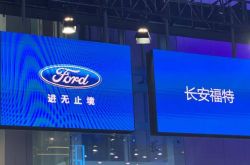Three-Pronged Challenge: OPPO Reno15 Faces Tough Market Hurdles
![]() 11/19 2025
11/19 2025
![]() 399
399
Global Smartphone Market Witnesses Fierce Rivalry as OPPO Makes Another Strategic Move
On the evening of November 17, the Reno15 series, embodying OPPO's aspirations to break into the mid-to-high-end smartphone market, is poised for its official launch. Backed by popular idol Song Yuqi, the series introduces a new color variant dubbed "Starlight Bow." OPPO claims that this hue employs the industry's pioneering holographic lithography technique, creating a "naked-eye 3D" illusion by clustering star-like particles into a bow-shaped pattern on the phone's exterior.
Notably, this material not only enhances the device's aesthetics but also boasts anti-fingerprint properties. Paired with an aluminum alloy sandblasted metal frame, it strikes an ideal balance between visual appeal and practicality.
Concurrently, OPPO will unveil a limited-edition Reno15 Song Yuqi model, with only 23 units available worldwide, amplifying brand excitement through extreme exclusivity. This variant also showcases the "Starlight Bow" color, offers a premium 16GB+1TB configuration, and features a unique engraved serial number and Song Yuqi's autograph on the side of each device, accompanied by a newly designed engraving pattern.
Clearly, amid stagnating growth and converging specifications in the smartphone industry, OPPO is striving to carve out a distinct brand identity through a multifaceted strategy encompassing product differentiation, targeted marketing, and agile supply chain management in the fiercely competitive "red ocean."
Breaking Away from Industry Sameness
It is widely recognized that China's smartphone market has definitively bid farewell to the era of rapid expansion and has instead entered a ruthless and nuanced battle for existing market share.
According to IDC data, global smartphone shipments in the first quarter of 2025 experienced a mere 1.5% uptick, while China's market grew by 3.3%, showcasing resilience but also signaling limited growth potential. It's worth noting that this modest increase was largely fueled by the temporary boost from the "national subsidy" policy. Once this policy incentive wanes, market growth is anticipated to face significant downward pressure.
Against this backdrop, smartphone manufacturers must more precisely target niche consumer segments to bolster user loyalty and repurchase rates. The Reno15 embodies OPPO's quest for differentiation.
On one hand, aesthetics have always been a cornerstone in the smartphone industry, with design serving as the most intuitive differentiator. OPPO aims to establish a competitive edge in the "beauty is paramount" arena.
The Reno15 series introduces the industry's first holographic lithography process, creating a naked-eye 3D visual effect for colors like "Starlight Bow." Combined with a full-metal frame, an ultra-narrow 1.15mm four-sided bezel-less straight screen, and a rear camera Deco crafted using the same cold carving technique as the iPhone, the series conveys a message of quality and sophistication to consumers.
On the other hand, facing severe industry homogenization, the Reno15 series adopts a strategy of "focused reinforcement and comprehensive enhancement," building competitiveness in core areas such as imaging, battery life, and durability.
In terms of imaging, the Reno15 series features a 200-megapixel Samsung HP5 sensor as its rear main camera, paired with a 50-megapixel ultra-wide lens and a 50-megapixel periscope telephoto lens. The front camera also reaches 50 megapixels, catering to multi-scenario shooting needs. In terms of basic specifications, the Reno15 series is equipped with a Dimensity 8450 chip, a 6200mAh battery, and 80W fast charging. It supports IP68/IP69 protection and adds 50W wireless charging to the Pro version, demonstrating its commitment to value at its price point.
Notably, the Reno15 series offers two size options: the standard version with a 6.32-inch screen and the Pro version with a 6.78-inch screen.
In today's market, where mainstream smartphone screens are enlarging, the Reno15 standard version boldly adopts a 6.32-inch screen, precisely catering to users who desire a flagship experience but prefer a single-handed grip. This strategy, while seemingly niche, actually carves out a relatively less competitive "blue ocean" amid the fiercely contested "red ocean."
Although the Reno15 series demonstrates a clear differentiation strategy in design, specifications, and size, achieving true differentiation for domestic smartphones remains an arduous journey amid deepening technological iterations and complex competitive landscapes. OPPO's path to differentiation is just beginning to navigate the deeper waters.
Amidst the Turmoil, a "Three-Pronged Challenge"
Currently, OPPO finds itself in a complex battlefield scenario of a "three-pronged challenge."
According to IDC's quarterly mobile phone tracker report, China's smartphone market shipped approximately 68.46 million units in the third quarter of 2025, a slight year-on-year decrease of 0.5%. OPPO shipped 9.9 million units in the third quarter, accounting for a 14.5% market share, with a year-on-year increase of 0.4%.
In reality, facing pressure from Apple in the high-end market, intense competition from vivo, Xiaomi, and Honor in the homogenized segment, and long-term anxieties over core technology self-reliance and supply chain security, OPPO's 0.4% growth is no small feat.
Facing Formidable Foes Ahead: Apple's Invisible Pressure in the High-End Market Hinders OPPO's Ascent
IDC data reveals that in the third quarter, Apple shipped 10.8 million units, capturing a 15.8% market share. Its 0.6% year-on-year growth appears particularly robust in the high-end market. This indicates that Apple continues to attract the most core users in the most profitable high-end segment.
This pressure is not merely at the product level but also stems from the intangible barriers constructed by brand momentum and the iOS ecosystem. When some media outlets describe the rear camera design of the OPPO Reno15, they still feel compelled to mention its "adoption of the same cold carving technique as the iPhone," indirectly reflecting Apple's strong influence in shaping industry standards.
Besieged by Strong Rivals: OPPO Faces Intense Competition and Internal Strife from Rivals like Vivo, Xiaomi, and Honor
It is widely acknowledged that OPPO and vivo share highly overlapping strategies in areas such as imaging, design, celebrity endorsements, and offline channels. Both are vying for users most sensitive to "aesthetics" and "portrait photography," leading to a stalemate in competition. IDC data shows that despite a 7.8% year-on-year decline in shipments in the third quarter, vivo still regained the top spot with a 17.2% share, demonstrating its strong market foundation.
Similarly, Xiaomi continues to exert pressure with its efficient online direct sales and community marketing, excelling in cost-effectiveness and online presence. Honor, leveraging its rapidly recovering channel network and stable product strategy, is steadily eroding market share. This all-encompassing competition in performance, pricing, and channels makes it difficult to sustain any slight advantage, severely compressing profit margins.
Anxiety Persists Behind the Scenes: OPPO's Rocky Road in Self-Developed Chips and Long-Term Concerns Over Core Technology and Supply Chain
Huawei's Kirin chips and HarmonyOS, along with Apple's A-series chips and iOS, all underscore that core technology is the ultimate weapon for breaking free from homogenized competition and building brand moats. OPPO once actively invested in self-developed chips (Mariana) but currently lacks significant news on this front, raising market doubts about its long-term technological strategy.
Moreover, reliance on MediaTek and Qualcomm for core SoCs means OPPO is at the mercy of others in terms of innovation pace, cost control, and differentiated features. When all Android manufacturers can source top-tier chips from the same supplier, the window for "performance leadership" becomes extremely fleeting.
Without mastering core technologies, it is perpetually challenging to form unique and sustainable technological barriers. This supply chain dependency has become a deep-seated anxiety for OPPO as it aspires to reach higher echelons.
Gaining Clarity on Industry Trends for Steadier Progress
The golden age of China's smartphone market has concluded. Whether OPPO can consolidate its existing advantages while achieving qualitative breakthroughs in key technologies, ecosystem development, or brand value will determine its industry standing and market landscape in the era of competition for existing market share.
First and foremost, stabilizing its mid-to-high-end market presence is OPPO's top priority. The success of the Reno series stems from its precise understanding of young users' needs—stylish design, exceptional imaging, and convenient purchasing. To maintain the high standards of the Reno series, OPPO needs to invest more in continuous innovation and user insights.
Data shows that the OPPO Reno14 series sold 2 million units in the third quarter of 2025, ranking first in its price segment. It also clinched the monthly sales championship for three consecutive months in June, July, and August. Furthermore, Counterpoint Research data indicates that OPPO's average selling price (ASP) jumped to a position second only to Apple globally. Moreover, OPPO's smartphone ASP increased by 14% year-on-year during the same period, the fastest growth among the top five brands.
Secondly, OPPO needs to achieve breakthroughs in key technological areas. Smartphones are the best platform for AI large models. If OPPO can deeply integrate its AI capabilities into the operating system to deliver truly intelligent, proactive, and personalized services—such as revolutionary voice assistants, content creation tools, and cross-device collaboration—it can create a user experience barrier that competitors find difficult to replicate.
Furthermore, ecosystem synergy has become a critical dimension of competition. When users are immersed in OPPO's multi-device collaborative environment, their device replacement choices will naturally lean towards OPPO.
OPPO's Pad, watches, earphones, and other devices derive their core value not from individual sales volumes but from constructing a seamless collaborative experience network with smartphones. By strengthening cross-device interconnection capabilities and forming an "ecosystem lock-in effect" similar to Apple's, OPPO can significantly enhance user loyalty and brand affinity.
In summary, OPPO's breakthrough cannot rely solely on incremental innovations in a single generation. Instead, it hinges on OPPO's ability to firmly navigate and systematically advance in the "deep waters" of technology, ecosystems, and user experiences.






